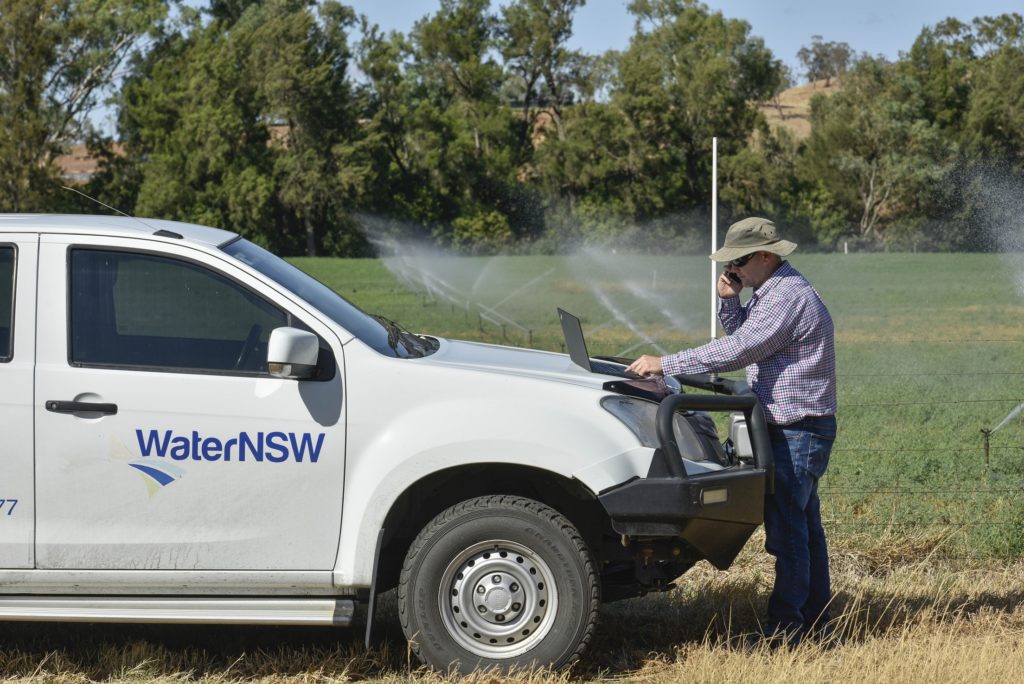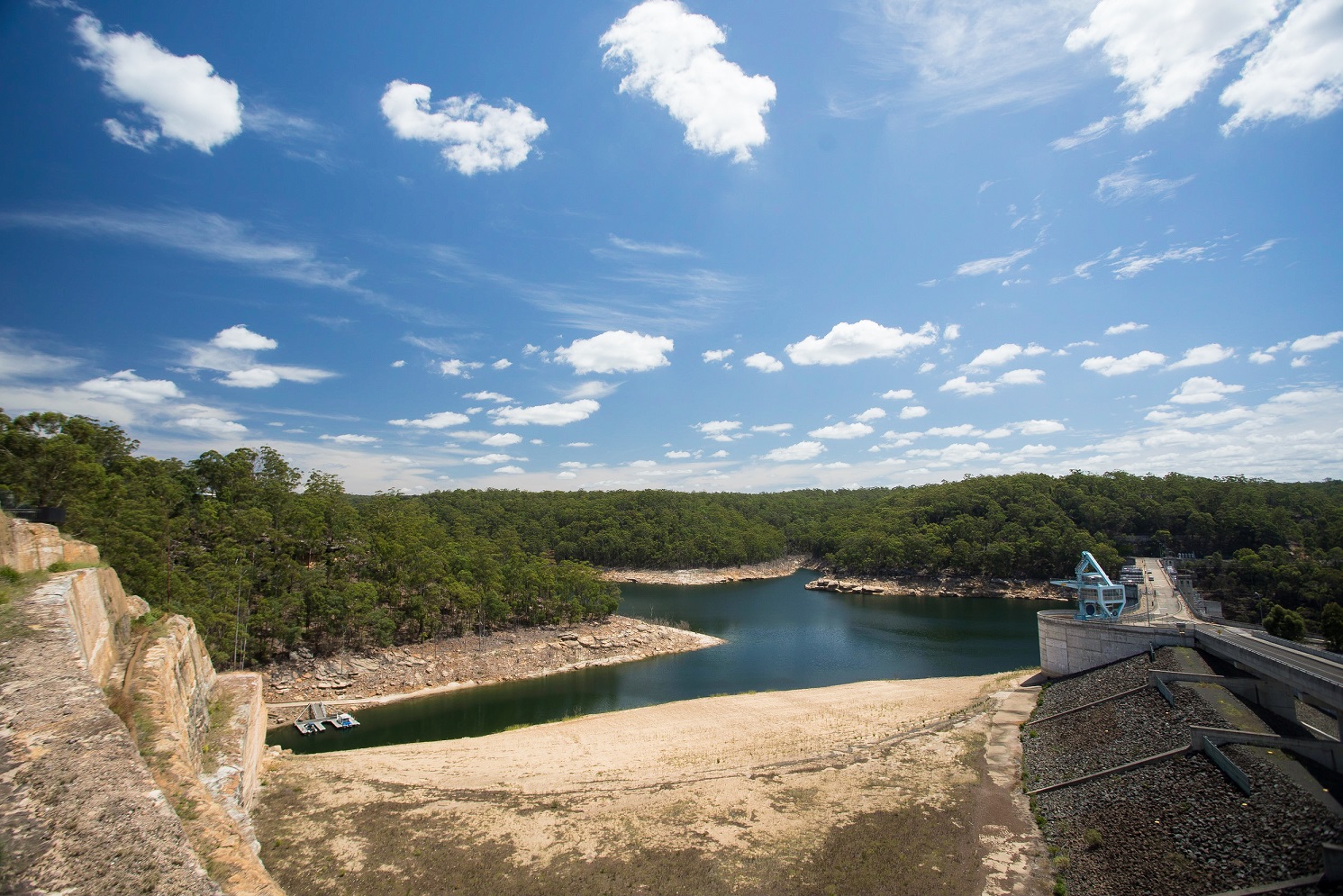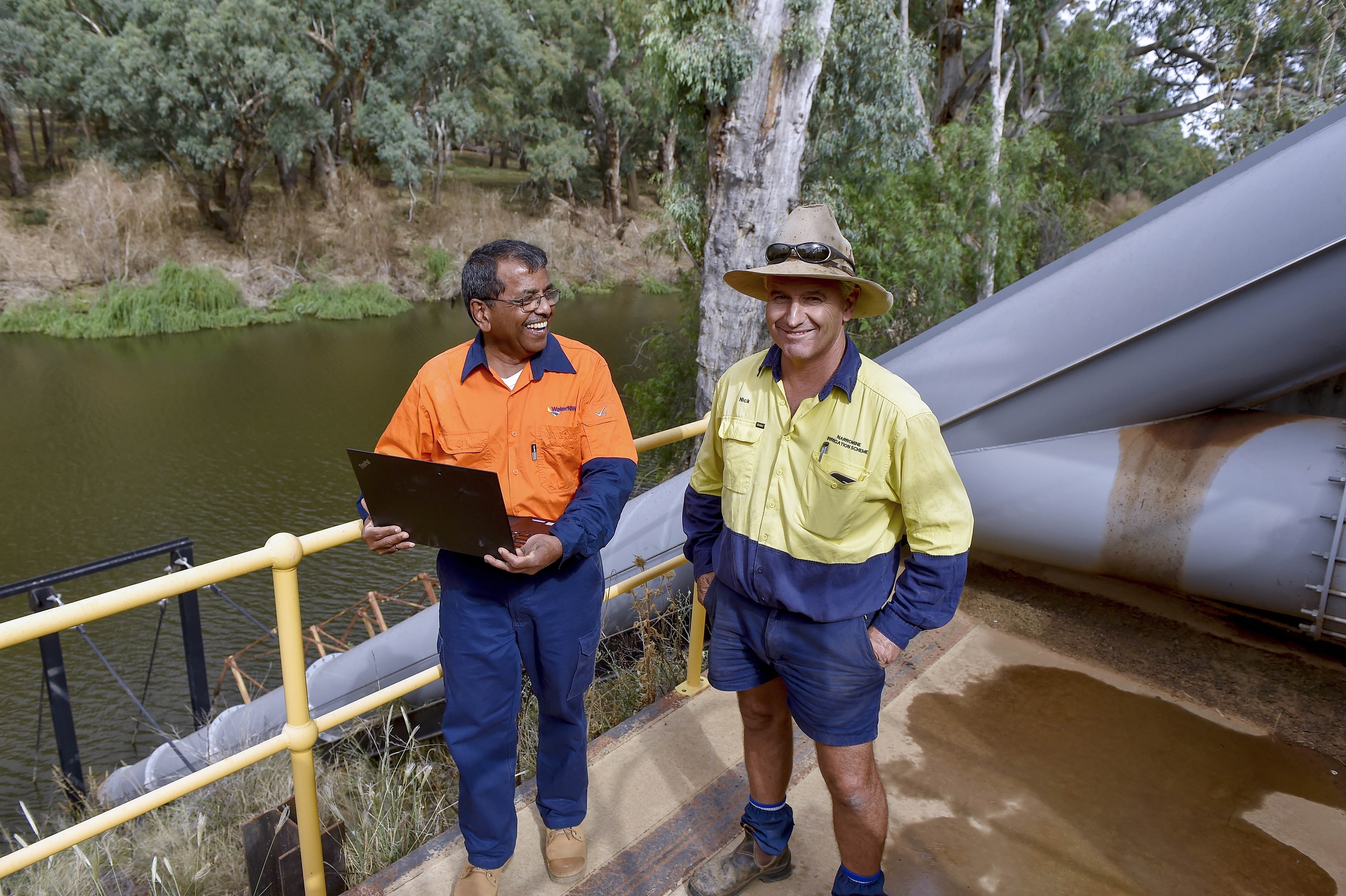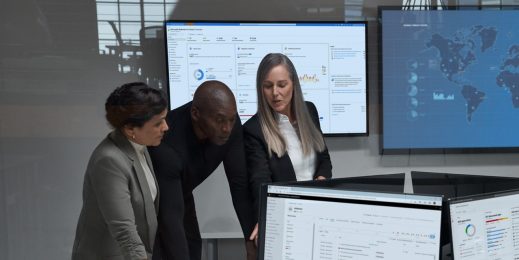
Rivers of data steer WaterNSW transformation
Water is Australia’s most precious resource; without it no other industry could survive, no community could thrive.
WaterNSW is the State-owned corporation that oversees NSW’s rivers and water supply systems, supplies two thirds of water used in NSW, owns and operates the largest surface and groundwater monitoring network in the southern hemisphere, and builds, maintains and operates essential infrastructure.
Every primary school child knows that without clouds there is no water. WaterNSW knows that without the cloud its job would be a lot harder.
The organisation was formed from the merger of three separate agencies; all had different computer systems, all had different processes. To promote one culture, one way of working WaterNSW wanted processes and information systems that spanned the entire organisation and provided a coherent platform for the future.
After joining the organisation some months after the start of the project, as chief information officer, it was Ian Robinson’s job to deliver. With a team of around 80 IT professionals including contractors, he needed to provide streamlined solutions to support WaterNSW’s 850 employees, a data-driven platform to ensure transparency for managers, and ultimately a digital platform that will allow the organisation to continue to innovate and deliver reliable, safe water supplies across the State.

Robinson brought a greenfields mindset to the challenge that; “Wasn’t driven by what the legacy systems did and didn’t do. It was driven by what the future state of processes should be the desire to align that with a best practice model, and then select based on that.”
Instead of selecting a system and shoehorning process around that, the team identified best practice processes and found a platform to support them. While the organisation had used various best of breed solutions, it didn’t have the depth,breadth and integration needed for the future.
WaterNSW needed richly featured productivity applications, procurement, enterprise asset management, finance, payroll, HR systems that covered employees and partners, and a flexible invoicing and billing system.
A tender identified Microsoft’s three clouds – Dynamics 365, Office 365 and Microsoft Azure – as the optimal solution. WaterNSW also opted to use Microsoft Azure AU Central which has been specifically designed to support national critical computing.
According to Robinson; “Microsoft was a perfect fit given our size did not justify a complex alternative system. It was a modern system that allowed us to leapfrog a pure upgrade of systems to a whole new cloud-based ERP. It also offered a very significant investment over time towards a comprehensive and ever evolving solution that will grow with our business aspiration.”
We use Dynamics 365 to drive the work for the field worker, we have telemetry systems that capture data and then we use Azure analytics tools to calculate what is the likely health of that dam and then project forward the potential scenarios and risk that we’ve got on that dam. And that, I think, is the first time that has been done in Australia. – Ian Robinson, CIO, Water NSW
Customer impact
One of the first visible impacts for customers is the transformation of their bills. Shifting from a very old inflexible legacy billing to Dynamics 365 Billing transforms the process says Robinson.
“It enables us to be able to send out a billing file and then track the payment all the way through the process and open up a whole new range of payment options. So, it has improved the way our customers can interact with us, but also the visibility of information about where that customer is up to with their payment plans or statement position and overall debt levels, and allows us to manage that with a more interactive approach that we can then record in the system and maintain.”
The three clouds approach is also transforming the way WaterNSW personnel operate.
“Let me give you a real example: a worker who is in the field getting allocated work orders from the Dynamics 365 solution operates in Office 365 to understand the safety dimensions, the work instructions, how he does his job, and communicates with people back in the office and some of the nuances around that.”
Today WaterNSW has a single system using integrated data across multiple processes which significantly simplifies business processes and management of corporate data.
In the future Robinson can envisage a time where Microsoft’s mixed reality capabilities are brought into play with workers donning a HoloLens to have expert advice provided right in their line of sight so that instructions or drawings are overlaid on what the worker sees in the field. “Bringing the eyes and ears of the experts to the guy with the tool – this increasing integration between the three clouds is I think what we’re seeing.
“But from an IT professional’s point of view, it allows me to take my hands off the control levers of managing infrastructure and software support and versions – the kind of mechanics of IT- and focus on real business value. And that’s why people adopt the cloud because it allows them to just assume all that will run. You guys are providing that as a service and Microsoft then becomes part of my IT team rather than just a product provider.”

Maximum impact, minimum fuss
Working with Microsoft partners, Business Aspect, a Data#3 company, and a consortium of partners, WaterNSW crafted a solution that delivers maximum impact with minimum fuss, even though it has quite unique requirements.
Take asset management for example. The legacy asset management system had covered dams and other key assets – but smaller assets had been overlooked, despite their importance to the smooth operation of WaterNSW. These can now be brought into the fold.
The transformation has also provided the opportunity to support field workers with mobile applications as well as the chance to collect data in real time. WaterNSW is developing an integration between Dynaway and Dynamics 365 Field Service to support this.
Dynamics 365 also underpins customer experience management and project management.
“For the first time we have an integrated solution that allows a work order to be planned for work on our assets, to be issued to the correct worker (meaning the worker is defined as being suitable in our HR system with up to date competencies and job/safety tickets), for the worker to be able to buy material for the job, log his time against the job and then compare his performance against everyone else doing a similar job. We get visibility in our reporting of rolled up views of costs by asset, worker, region and can compare performance against key targets. All this in one system.”
The transformation has helped streamline operations; email is now in the cloud freeing up WaterNSW’s infrastructure team to focus on more value-adding work; Skype supports inter-office communications including meetings with remote teams; SharePoint has been used to set up an internal procurement portal and manage content on the intranet in a much more personalised and meaningful way.
Teams meanwhile is being widely embraced to support friction-free collaboration. Instead of having to use the records management system to access and then work on documents, Teams allows people to work on the same document concurrently.
OneDrive too is changing the way people store and access information, reducing the need for internal storage while boosting information accessibility regardless of where an employee is working.

Business needs drive transformation outcomes
Microsoft partners, Business Aspect and DXC Technology, supported WaterNSW through the transformation, bringing the expertise the organisation needed to link the technical capabilities of Microsoft’s three clouds with business requirements.
Business Aspect and WaterNSW used the APQC (American Productivity and Quality Centre) framework to provide a common language model so that both organisations would refer to a business process using the same terminology.
David Lennon, managing partner of Business Aspect, explains that taking a rigorous approach was fundamental to the success of the transformation.
“The APQC framework allowed us to analyse each process in great detail and then use that insight to translate those processes into system functions and data requirements. This along with our deep understanding of, and experience with, Dynamics 365 allowed us to help craft a solution that dovetailed with WaterNSW’s operational requirements,” says Lennon.
It was challenging – but useful says Robinson. “That allowed us to build the bridge between those two worlds, and then engage with the technical staff who configure and implement any customisations to the system. I think the other really great thing as an outcome of that is that was built by experts who built it using standard Microsoft extensions, and there were quite a few customisations, which rightly or wrongly enable us to run our business the way we’d like to run our business, but we’re able to use those extensions in an upgrade seamlessly.
“So, we went from version 9 of Dynamics 365 to version 10 without any significant problems – and for a CIO that is such a significant benefit, because ERP upgrades in the past have been a huge pain.”
Robinson says that the update experience proved that the solution has been built to last.
According to Lennon; “Working with WaterNSW, our team, led by program manager, James Creighton, took a best practice approach to matching business requirements with the technology solution allowing us to deploy a platform that not only meets the organisation’s needs today – but has a clear runway to the future.”
Adopting Microsoft Azure AU Central, which has been developed specifically to handle national critical computing, also ensures high levels of security, resilience and trust.
Maintaining the integrity of WaterNSW’s dam and river measurements is critical; farmers and agricultural enterprises depend on them to steer their investment decisions, while they provide the evidence-base for informed public policy.
“The resilience has been great and we have had no major outages in the system at all.”
Deploying Microsoft’s three clouds has delivered the underpinnings for the process and cultural unification that WaterNSW needed. But it has also established the foundations for ongoing innovation.
Robinson is moving to an Agile delivery model, making use of micro services particularly in analytics.
The organisation is currently adding analytics capability to budgeting and finance area to allow it to model various scenarios – how it could reduce cost, apply new business models, grow revenues. It is also modelling procurement strategy and performance and workforce planning.
The ideas, like the water in NSW, just keep on flowing.














